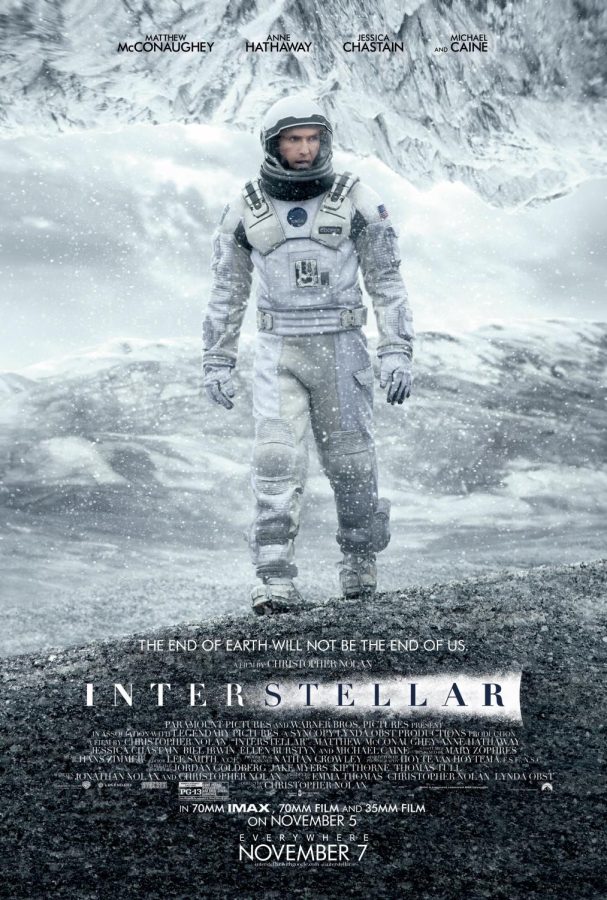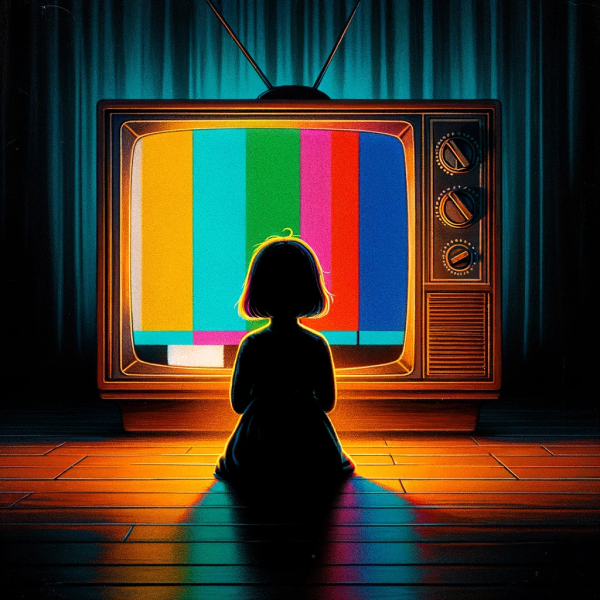How ‘Interstellar’ pushed the boundaries of science and fiction
The poster for Christopher Nolan’s ‘Interstellar,’ a film of grandiose imagery yet surprisingly human themes.
Most modern science fiction blockbusters feature some sort of cutting-edge technology. The movie provides wordy, implausible exposition about some parallel universe or otherworldly creature, flaunts convincing-enough CGI, and then the audience moves on with their lives.
But Christopher Nolan’s Interstellar does not just place its protagonist in a cool computer-generated spaceship and applaud itself. Through its revolutionary use of technology, the 2014 epic transcends its genre to become a work of imagination and real-world discovery, earning a spot at the forefront of both contemporary cinematic and astrophysical conversations.
A cosmic odyssey shot in all-encompassing Panavision, Interstellar tells the story of a father and former NASA pilot who, after blight and cataclysmic dust storms make Earth uninhabitable, must embark on a space odyssey to find a new planet for human colonization. When the IMAX blockbuster was first released, it attracted a considerable amount of controversy. Fans of the film praised Interstellar’s ambitious scale and visuals, while its detractors criticized an addled screenplay and confusing ending. The most heated arguments tended to concern whether all the physics in the movie are fully accurate… as if the title of the genre weren’t science fiction!
Regardless of where you stand in these debates (“But the screenplay! But the science!”), the impacts left behind by Interstellar deserve acclaim.
Interstellar’s high-tech cinematography is the film’s most memorable legacy. When writing and shooting the movie, Nolan employed doctors, software developers, engineers, physicists, and a variety of Einsteinian theories to create the most scientifically accurate images possible. Physicist Kip Thorne led a team of thirty people, sometimes spending over 100 hours on a singular frame, to combine theoretical equations with advanced computer graphics. And oh, what a $165 million budget and an ambitious Christopher Nolan-led team can do!
All 169 minutes of Interstellar are worth watching for its hypnotizing visual language alone. Using a combination of camera movements, long lenses, and editing techniques, the team converted everything from corn fields to the outermost cosmos into clear, crisp compositions that overwhelm the viewer with reverence for the natural world. Astounding images of our protagonists juxtaposed against an ever-expanding universe evoke the sublime, while reinforcing the emotional truths of our protagonists’ isolation and distorted humanities. As the camera pans across the sweeping expanses of a completely believable, meticulously constructed universe, Interstellar cements its place in the CGI hall of fame – where tech becomes art.
However, Interstellar is not just visually exhilarating. It’s not even just a film about a world with advanced technology. It’s one that advances technology in our actual world.
Interstellar’s CGI team first made their own scientific discovery. As they added dimension to their black hole model, they realized that the space-time around the spherical rendering would be substantially warped. From there, independent, real-world scientists would come to prove that the team’s images of black holes and wormholes were remarkably accurate.
The research behind the film’s images inspired three peer-reviewed scientific papers, a book, and a variety of journal articles. Since wormholes are theoretical, there is no guarantee of how they would appear, but after Warner Bros. licensed the code behind Interstellar’s rendered images to actual scientists, groups like the American Journal of Physics confirmed the likely accuracy of the film’s depictions over existing models. Moreover, when the first photograph of a black hole was taken in 2019, scientists favorably compared it to Interstellar’s asymmetrical rotational model, noting the film’s detailed usage of time dilation and the Penrose process.
In its story, Interstellar further uses technology to examine the duties we have to one another as humans, and how love, distance, hubris and hope affect our interpersonal relationships. Cooper, our protagonist, uses codes to decipher messages and connect with his daughter, Murph. Murph spends her entire life trying to reconnect with Cooper, who is essentially lost in space, through pursuing equations and technological innovations, with her only apparatus for communicating with her father being a Skype-esque video system. The film’s most potent symbol of relationships becomes a wristwatch – a literal piece of technology – that Cooper finally uses to communicate with his daughter from a remote dimension. Even TARS, a robot on the spaceship, is treated as a human crewmember and programmed to further the scientific mission while satisfying a yearning for communication.
This narrative focus on closeness is most surprising, especially when our protagonists couldn’t be further away from each other. Against the odds of space travel and these mind-bending, grandiose cosmic backdrops, relationships are what keep our characters going. And in Interstellar, technology is what facilitates the emotional connections necessary for human survival.
So why watch Interstellar? Interstellar not only displays the potential of cinema to spur conversations about exploration, science, and technology, but the emerging capacity of films themselves to be at the forefront of them. For years, Hollywood has butchered scientific law in the name of spectacle. But Interstellar, this long-awaited union of compelling visuals with genuine innovation, is science fiction that gives back to science itself.
Interstellar is available to stream on Amazon, Hulu, and iTunes.











